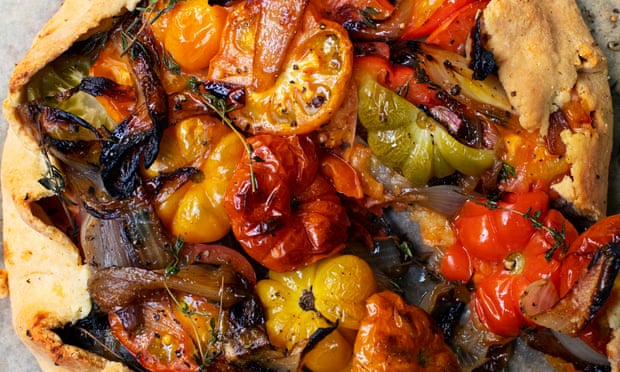Over the years I’ve written a number of times about our exploits making terrine – most notably what we’ve dubbed Ennismore Terrine. That post is some 8 years old, but our first rendition of the recipe goes back more like 35 years.

will give you the overall impression of the result.
While it takes a bit of time to put together, it is very forgiving and can be varied almost infinitely to suit. Just to show the versatility here’s what we did a couple of days ago.
Ennismore Terrine, 2022 Variation
This makes enough to fill a large oval Le Creuset casserole (as above).
Ingredients
200g smoked bacon lardons
400g pork mince
800g chicken livers
400g plain pork sausages, skinned
300g bread without crusts
1 large leek, finely chopped
3 small red onions, finely chopped
7 large mushrooms, finely chopped
6 cloves of garlic, peeled
Generous wineglass of brandy
Half a glass of white wine
2 tablespoons garlic purée
4 tablespoons tomato paste
Large bunch of tarragon, leaves only
1 large egg
Pinch of salt and a generous grind of black pepper
2 tablespoon Worcs. sauce
Olive oil
Knob of butter
Method
- Put the bread, tarragon, salt and pepper, garlic cloves in a food processor and whizz to a crumb. Transfer to a very large mixing bowl (actually we used a roasting tin!)
- Add the sausage meat, half a glass of the brandy, Worcs. sauce and the egg to the food processor and whizz again to a smooth paste. Transfer this to a large mixing bowl.
- Heat a drizzle of olive oil in a frying pan and sweat the leek until going translucent. Add to the mix along with the mushrooms.
- With a bit more olive oil fry the onion until translucent. Tip this out into the food processor with the garlic purée and tomato paste.
- With a little more oil if needed fry the bacon until the outside is seared and browning but still undercooked inside. Add this to the food processor and whizz lightly; do not purée. Add this to the mix.
- Now fry the chicken livers for a few minutes again until the outside is beginning to brown but not cooked through. (As the livers aren’t fully cooked don’t go tasting the mix!) Add this to the food processor and whizz; it will make a slurry. Add this to the meat mix.
- Finally fry the pork mince until lightly browned but also not cooked through, and put this in the food processor.
- Deglaze the pan with the rest of the brandy and the white wine. Add this to the food processor and whizz to a rough paste; don’t worry if it looks grainy. Add this to the meat mix.
- Mix everything together thoroughly; don’t be afraid to use your hands.
- Butter the casserole generously.
- Pour the meat mix into the casserole and firm it down well. Cover with foil and if possible a tight fitting lid. It is wise to put this on a baking sheet as a full casserole may bubble juices over the edge – as in the above photo!
- Cook in the oven at 170°C/fan 160°C/ gas 3 for 1½-2 hours. It is done when a knife stuck in the terrine for a few seconds comes out very hot (or a meat thermometer at 80°C).
- Remove from the oven and if possible weight the terrine to press it (something flat with tins of beans or a brick on it works; heavier is better).
- Allow to cool for a couple of hours and transfer to the fridge overnight, still with the weights.
- Serve with crusty bread and a glass of robust red wine.
This variation turned out quite liver-y; if this isn’t to your taste adjust the proportions of pork and liver. The leek and mushroom made a nice background, and the tarragon came through well. All round it is extremely more-ish, and has the seal of approval from the Rosie cat.






